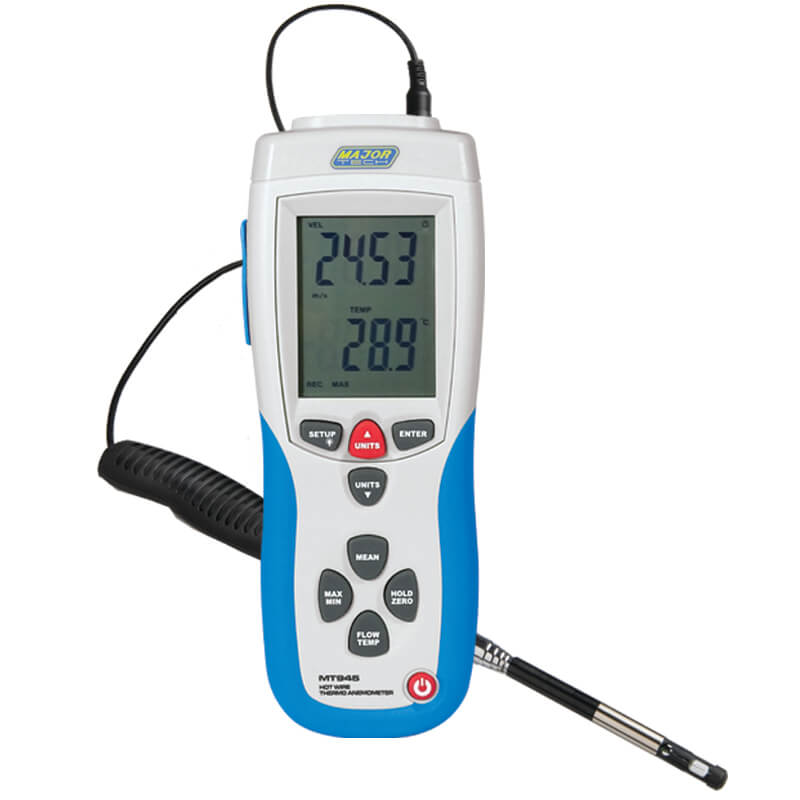Professional Tips for Adjusting Your Anemometer for Optimal Efficiency
Professional Tips for Adjusting Your Anemometer for Optimal Efficiency
Blog Article
Exploring the Functions and Benefits of Anemometers for Weather Enthusiasts and Professionals
From cup anemometers to sonic anemometers, each kind brings its special set of applications and advantages, losing light on numerous facets of climatic conditions. As we dig into the functions and benefits of anemometers, a deeper understanding arises not only of dominating weather condition phenomena yet also of the wider implications for sectors like wind energy production and ecological research.
Relevance of Anemometers in Weather Condition Monitoring
Anemometers play an important role in weather condition monitoring by supplying accurate dimensions of wind speed, assisting in forecasting and understanding weather condition patterns. These tools, ranging from typical mug anemometers to modern ultrasonic anemometers, are necessary for meteorologists, researchers, and weather condition enthusiasts alike. By determining wind speed, anemometers aid in figuring out the strength of weather sensations such as tornadoes, storms, and typhoons. In addition, they offer useful information for aeronautics, maritime operations, and various markets that are delicate to wind problems.

Sorts Of Anemometers and Their Applications
With the vital role anemometers play in weather surveillance and projecting, recognizing the different types of these instruments and their applications comes to be important for professionals and fanatics in the area. The most usual sorts of anemometers include cup anemometers, vane anemometers, hot-wire anemometers, and ultrasonic anemometers. Mug anemometers include 3 or four mugs placed on horizontal arms that turn with the wind, gauging its rate. Vane anemometers, on the other hand, use an openly rotating vane to straighten with the wind direction, supplying both wind speed and instructions dimensions. Hot-wire anemometers operate based upon the concept of convective warm transfer, where the cooling effect of the air circulation is determined to identify wind rate. Ultrasonic anemometers make use of ultrasonic noise waves to determine wind rate and direction properly.
Cup anemometers are durable and ideal for general weather condition surveillance, while vane anemometers are preferred for directional dimensions. Ultrasonic anemometers are non-intrusive and supply high accuracy, typically utilized in research and specialized climate tracking applications.
Advantages of Using Anemometers in Projecting
In meteorology, the usage of anemometers provides vital benefits for boosting the precision of weather condition forecasting. Anemometers measure wind rate and instructions, supplying essential data for predicting climate patterns. By integrating wind data into projecting models, meteorologists can much better recognize the motion of weather condition systems, prepare for changes in weather, and problem much more specific projections.
Moreover, anemometers play an important role in evaluating prospective weather dangers. Checking wind Check This Out rates assists forecasters predict extreme weather condition events such as storms, twisters, and winter season tornados with higher accuracy. This very early caution system enables authorities to release timely signals and execute necessary safety actions, decreasing the threats to life and residential or commercial property.
In addition, anemometers help in maximizing sustainable power production. By analyzing wind patterns, meteorologists can determine appropriate areas for wind ranches and forecast power outcome, contributing to the reliable generation of wind power.

Anemometers in Wind Energy Production
Provided the crucial role anemometers play in supplying exact wind information for weather forecasting and threat assessment, their value includes the world of wind energy production. Anemometers are crucial instruments in the field of wind energy, where the measurement of wind speed and instructions is critical for identifying the usefulness and efficiency of wind generator installations. By accurately gauging wind rates at differing elevations, anemometers aid maximize the positioning and layout of wind generators to take full advantage of power outcome.
In wind ranches, anemometers are tactically put to gather real-time wind data that is used to evaluate the prospective energy production of a website. This information is instrumental in determining the financial stability of wind power jobs and in forecasting energy generation to guarantee grid security. Additionally, anemometers aid in monitoring wind conditions to maximize wind turbine performance, stop damages from high winds, and ensure the safety of personnel operating in the location of wind turbines.
Enhancing Weather Condition Comprehending With Anemometers

Anemometers play a crucial function in improving our understanding of microclimates. These localized climate condition can differ substantially from wider regional forecasts, making it important to have accurate information for details locations. anemometer. By tactically putting anemometers in various locations, scientists can collect comprehensive info on how wind acts in different terrains, urban settings, or bodies of water
In addition, anemometers add to enhancing weather projecting designs by offering real-time information on wind actions. This information is particularly beneficial for anticipating severe weather occasions, maximizing agricultural techniques, and sustaining industries like aeronautics address and maritime navigating. Generally, anemometers are indispensable instruments that enable us to delve much deeper into the intricacies of weather systems, inevitably causing even more better-informed decisions and precise forecasts.
Final Thought
In verdict, anemometers play a crucial duty in weather surveillance and forecasting by determining wind speed and direction. They are necessary tools utilized by weather condition enthusiasts and experts to gather precise information for predicting weather condition patterns and assessing possible impacts. Anemometers likewise have applications in wind power production, additional highlighting their value in both meteorology and sustainable energy markets. Overall, anemometers contribute to boosting our understanding of weather sensations and improving forecasting capabilities. anemometer.
From mug anemometers to sonic anemometers, each kind brings its unique collection of benefits and applications, shedding light on various aspects of atmospheric conditions. These instruments, ranging from standard mug anemometers to modern-day ultrasonic anemometers, are essential for meteorologists, researchers, and weather enthusiasts alike. The most common types of anemometers include cup anemometers, vane anemometers, hot-wire anemometers, and ultrasonic anemometers. Cup anemometers are durable and appropriate for general weather condition monitoring, while vane anemometers are favored for directional measurements. Anemometers are vital tools in the area of wind power, where the dimension of wind rate and direction is critical for establishing the usefulness and efficiency of wind turbine installations.
Report this page